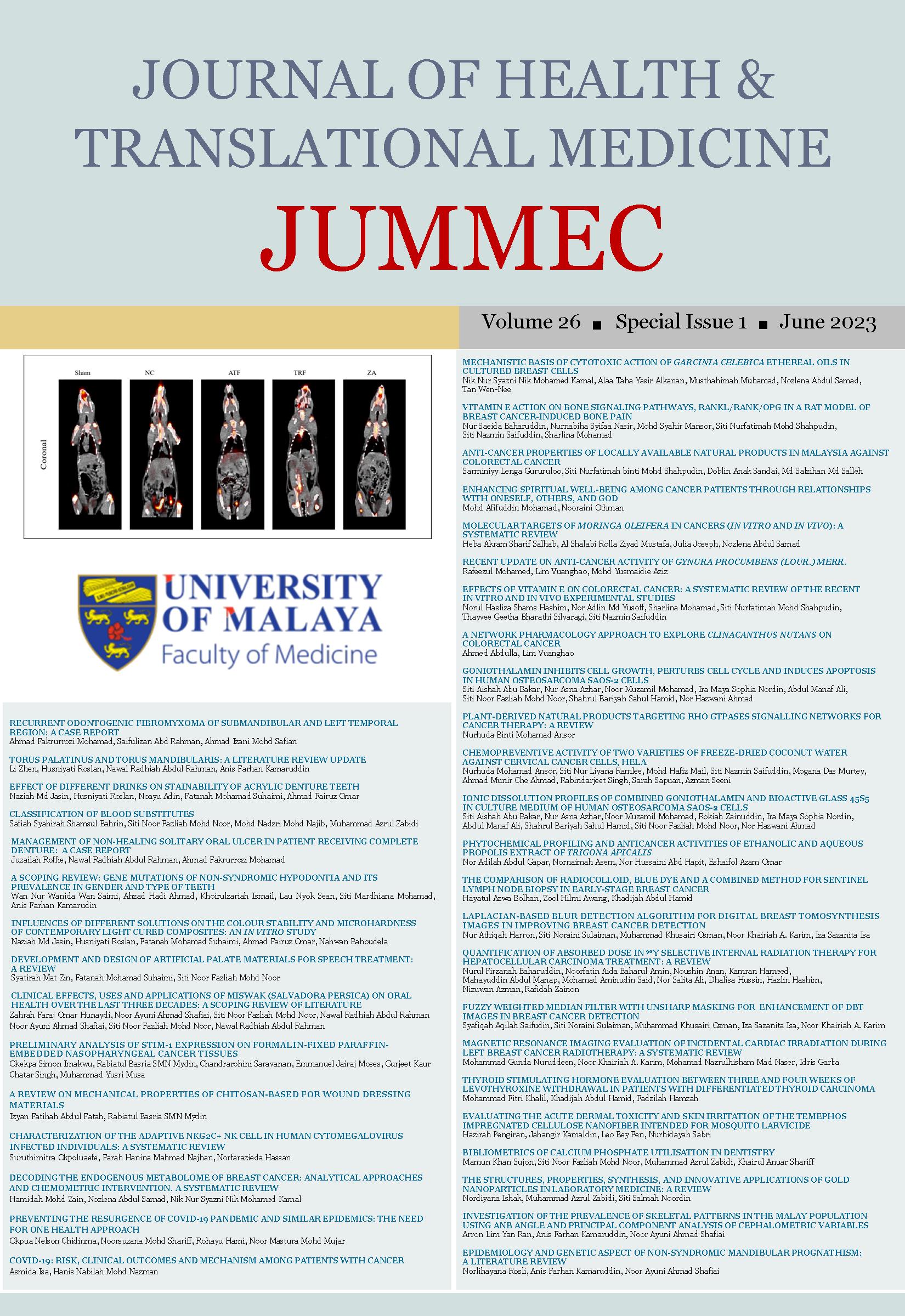CLASSIFICATION OF BLOOD SUBSTITUTES
Received 2023-01-19; Accepted 2023-03-15; Published 2023-06-06
DOI:
https://doi.org/10.22452/jummec.sp2023no1.28Abstract
Blood substitutes are substances used to replace or supplement the activities of biological blood cellular or acellular components. It is meant to be a transfusion-free option. There are four main categories that blood substitutes fall into: red blood cell substitutes, white blood cell substitutes, platelet substitutes, and plasma derivatives. Red blood cells (RBCs) substitutes can be divided into biological and chemical oxygen carriers. Biological oxygen carriers are haemoglobin-based oxygen carrier (HBOC) and stem cell derived red blood cells (cRBC). Sanguinate is the sole FDA-approved HBOC drug due to its sickle cell reversal, vasodilatory, and noninflammatory qualities while cRBC is utilized to produce universal group of RBCs. It has greater biological connections with natural bloods than chemical oxygen carriers, the second type of RBCs substitutes. When cRBC were transfused into participants, it was found that 63% of the cells continued to circulate in the blood, matching the half-life of a normal RBC, which is 28 days. These showed that red blood cells could be cultivated in a lab and that they also responded well in the human body. A study on stem cell derived red blood cells (cRBC) using growth stimulants, medium cultures, and genetic manipulation to immortalise human erythroid line has yielded mature RBCs. Now, this study is in the clinical trials which portrayed a huge success in the artificial blood field due to its immortal property. Perfluorocarbon (PFC) and polymer-based oxygen carriers are the two subcategories of chemical-based oxygen carriers. Products in this category may not be structurally resemble haemoglobin or RBCs, but they are intended to serve the primary physiological function of blood. Due to the complexity of the cellular parts of the immune system, no alternative to white blood cells (WBC) has been made artificially yet. However, immunotherapy strategies may offer the "functional substitution" for WBC especially in the case of artificial adaptive immunity. There have been approved alternatives for plasma derivatives but none to substitute platelets yet.
Downloads
Downloads
Published
Issue
Section
License
All authors agree that the article, if editorially accepted for publication, shall be licensed under the Creative Commons Attribution License 4.0 to allow others to freely access, copy and use research provided the author is correctly attributed, unless otherwise stated. All articles are available online without charge or other barriers to access. However, anyone wishing to reproduce large quantities of an article (250+) should inform the publisher. Any opinion expressed in the articles are those of the authors and do not reflect that of the University of Malaya, 50603 Kuala Lumpur, Malaysia.


